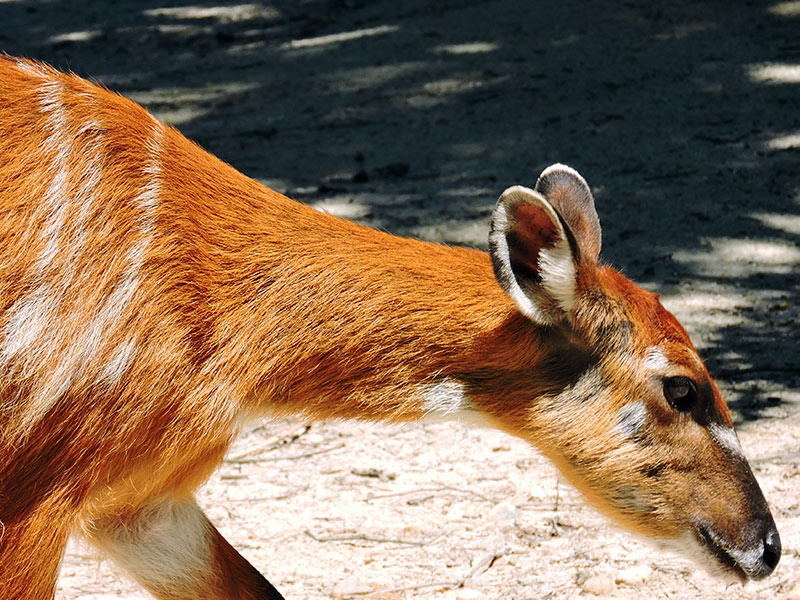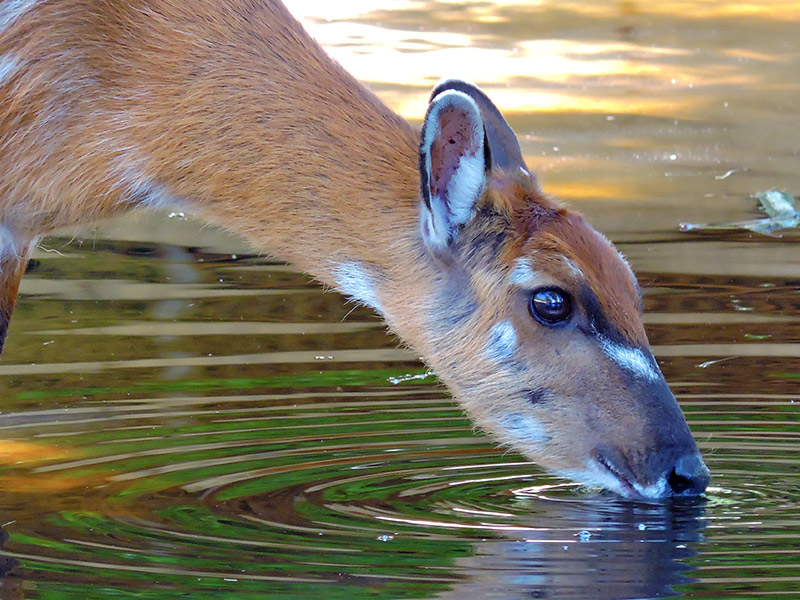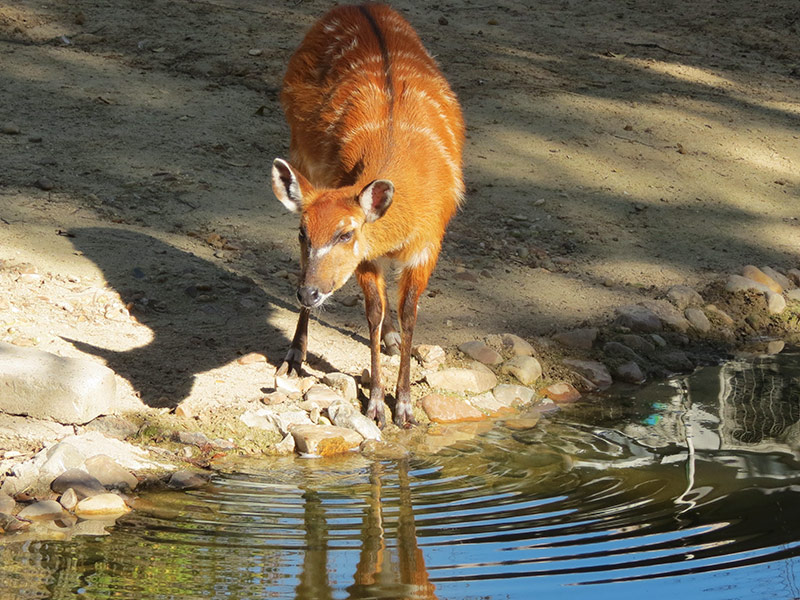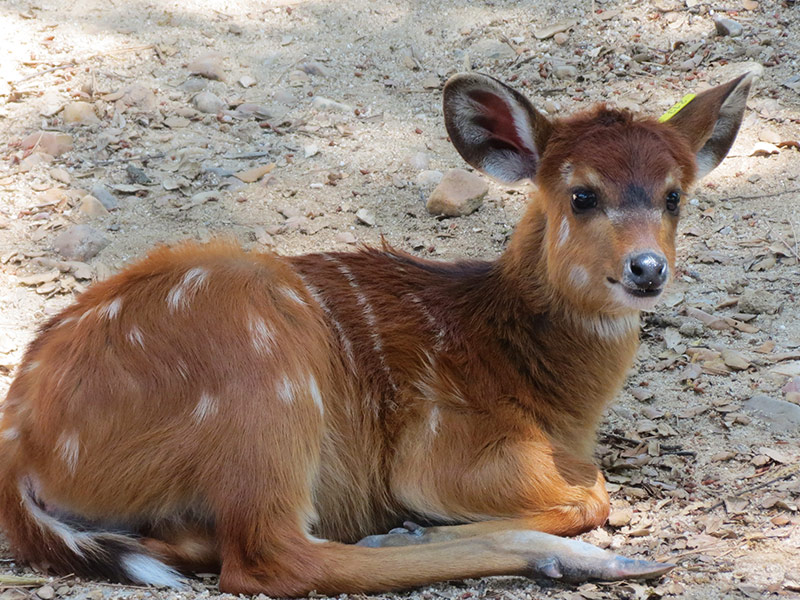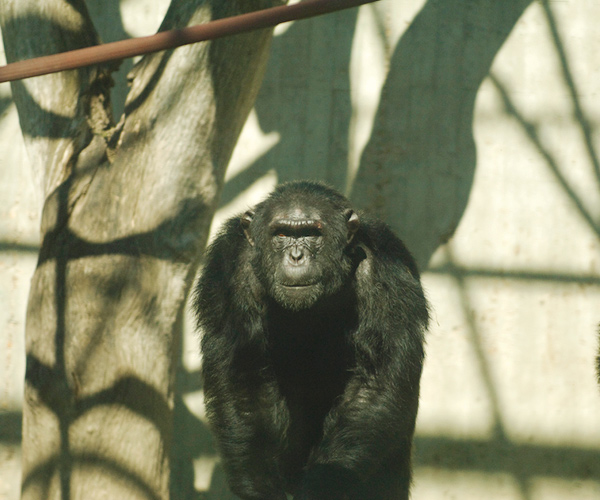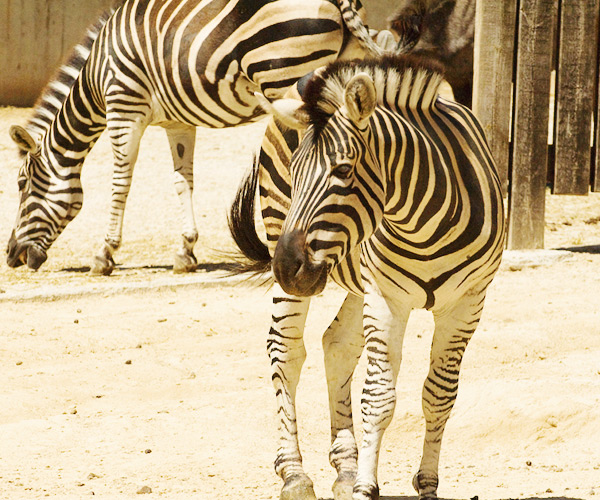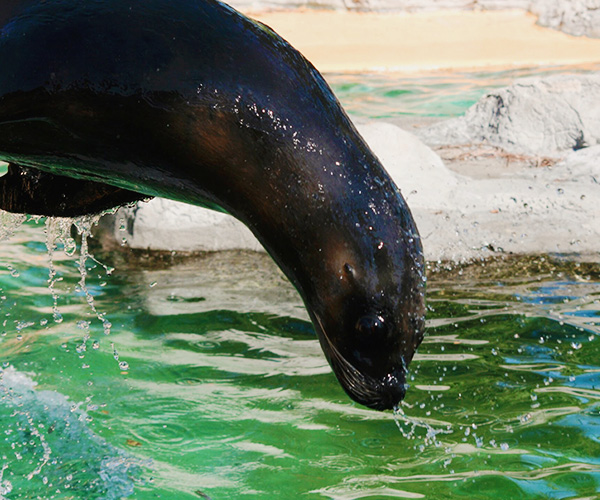Medium-sized antelope of practically amphibious habits, its distribution covers the swampy forests and marshes of a large part of sub-Saharan Africa.
The most remarkable particularity of its anatomy is its long hooves, widely separated at the tips and adapted to its swampy habitat. The sitatunga has a curved appearance (given by its hindquarters, which are higher than the front ones). It has long, slender legs, a short tail with a black tip and whitish edges. There is a marked sexual dimorphism between males and females. Males are horned and have a dull brown coat with white highlights, while females are hornless and their coat is reddish brown with white stripes.
This antelope is capable of spending hours in the water, submerged or swimming; in fact, it is an excellent swimmer.
Semi-social, non-territorial and sedentary, they usually go unnoticed thanks to their fur, which provides camouflage.
Reproduction takes place throughout the year; the female gives birth after seven months of gestation, usually to a single calf. This is suckled until it is six months old, and reaches sexual maturity at one year, if it is a female. Males mature later, at two and a half years at the most.
They feed on shoots, leaves, stems, fruits and aquatic plants during the night. During the day, they rest under bushes.

